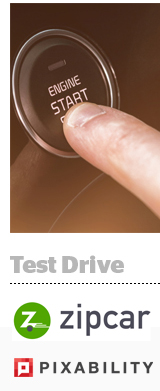
Zipcar was driving itself mad running prospecting and direct-response videos on YouTube.
Testing and targeting video creative on YouTube isn’t easy. But Zipcar still needed to figure out which ads work for which audiences.
“Everything we do is tied to a cost per acquisition,” said Celine Francois, senior manager of member acquisition at Zipcar.
Zipcar has been working with Pixability – a vendor that does video brand safety and measurement – for the last five years. More recently, it’s been using Pixability’s YouTube creative decision engine, which the vendor made generally available on Tuesday, to get a better handle on what works on YouTube and what doesn’t for different audiences.
In one recent test, Zipcar pitted professionally produced video content of various lengths against video with a more user-generated feel. The UGC-like content did far better. A nugget like that is really useful for Zipcar’s in-house creative people.
“Every insight we get from the creative decisioning engine on how video performs – and we have the ability to gather quite a bit – informs our creative team,” Francois said. “They can use this information to continue to iterate on the assets that are the best-performing for us.”
But these tests, she added, would not have been possible without an optimization engine.
Pixability’s decisioning engine uses artificial intelligence to analyze different versions of video creative to figure out which perform best against particular audiences.
Adding a testing feature is a natural evolution of the platform and something clients have been asking for, said Pixability CEO David George.
The industry went through a phase a few years ago when most advertisers were taking their television assets and running them on digital channels with a focus on branding – which didn’t work very well, he said.
But now that attitudes have changed and advertisers are embracing digital video on its own terms and as a performance driver, “keeping up with the insatiable need to have the right content and have fresh content is really hard for brands,” George said.
Most of Pixability’s clients, including Zipcar, access its platform as a managed service. In February, Pixability launched a self-serve option, which is starting to gain traction, particularly among advertisers looking for cross-channel insights. Pixability also recently added Instagram and Facebook to its platform.
“The value of self-serve here is that we sit on top of YouTube, Instagram and Facebook, so we can provide efficiencies and insights for people investing across all three,” George said. “These platforms measure things very differently, especially Facebook and YouTube, and we can make sense of that for clients.”
For the moment, Zipcar is sticking with the managed service it’s used to, but moving to self-serve is an idea that’s on the table. Zipcar already handles most of its channel work in-house, including acquisition. “We’re always looking at potential opportunities,” Francois said.
This post was syndicated from Ad Exchanger.


More Stories
Nala’s Auckland activation drives support for Project Uplift with 500+ bra donations
Hall of Fame Coach Jimmy Johnson Announces Retirement From Fox NFL Sunday
MNTN Is Selling Ryan Reynolds’ Agency Maximum Effort, SEC Filing Shows